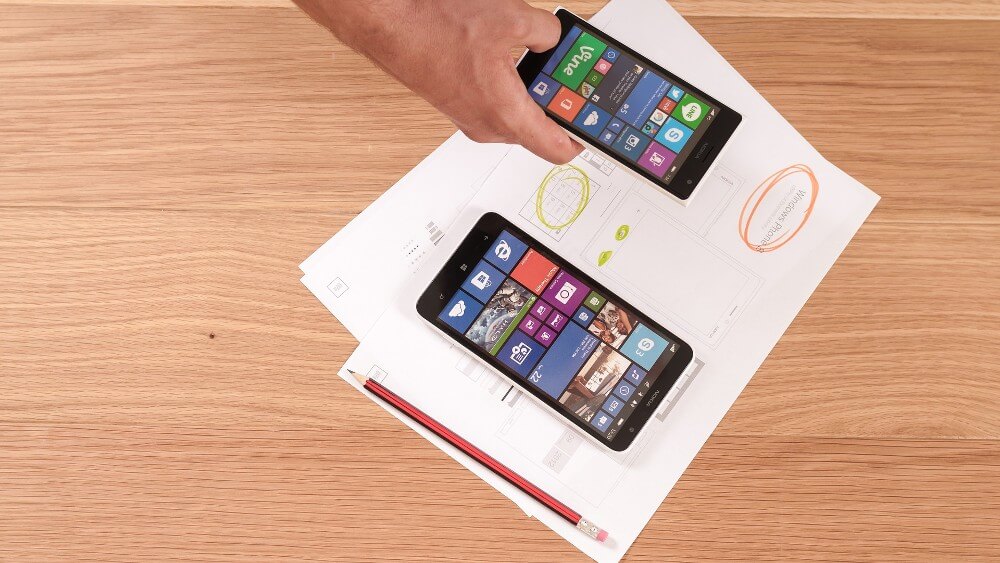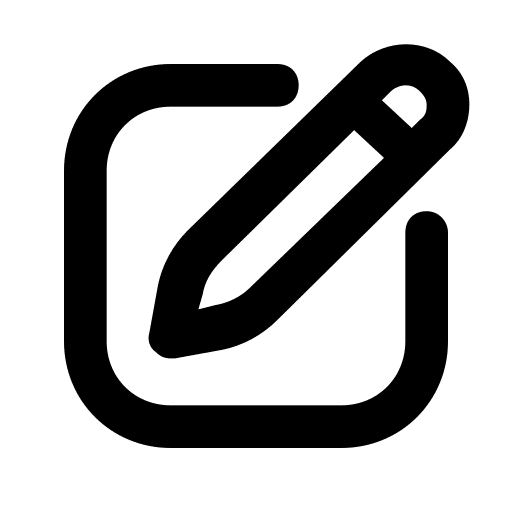Hello reader, Welcome to this informative guide about the UX Design Portfolio!
In this article, we will cover the fundamental things you need to observe during the crafting process of your UX Design Portfolio and a few roadblocks, and how to navigate them.
After reading this article, you will be well-equipped with the knowledge on how to create the most impressionable UX Design Portfolio.
Here are the topics we will focus on:
- Introduction to UX Design Portfolio
- Why You Need A UX Design Portfolio
- Tips On How To Create A UX Design Portfolio
- Navigating The UX Portfolio Roadblocks
Perhaps you are just starting and looking forward to your first serious gig.
Or maybe you have been in this profession for years and are now set on establishing your own brand.
Whatever direction you are headed, just know that you must create an impressive portfolio if you are going to win over that potential employer.
Let’s get started!
Introduction

As you build your UX Portfolio, it is essential that you observe the industry best practices and still make sure your portfolio is unique enough to stand out from the multitude of portfolios.
You have probably looked at a few portfolio examples and templates to understand how to go about it.
There are a few critical rules that you should consider when creating your UX Design, and we have highlighted that in detail.
Why You Need A UX Design Portfolio

You aim to create the most compelling UX Portfolio and understand precisely what this portfolio must achieve.
Think about the information that your portfolio should display.
What would you want anyone reading your UX Portfolio to understand about your work and level of professionalism?

Remember, your UX Design Portfolio is more than just a simple display of your most impressionable work, but it is actually a carefully woven narrative that gives this deep perspective of your design process and methods.
Your portfolio must, from the beginning, portray you as a competent Designer and make the viewer understand your approach to problem-solving situations.
The insight into the kind of professional you are should be displayed in an easy-to-understand and visually engaging package.
Tips On How To Create A UX Design Portfolio

A UX Portfolio is, of course, all about displaying your UX designer projects, which is why it is automatic that you must have some work experience first that can be displayed.
However, if you lack industry experience, you don’t need to fret because building an impressive portfolio is still possible.
If you have no prior work experience, you can always begin by taking on a free UX Design Course and ensuring that you are a competent professional in the first place.

After the free course, you can take on a UX Design Certification.
Consider the one that offers one-on-one UX mentorship and portfolio crafting guidance.
So how will you create that memorable portfolio?
Consider The Official Portfolio Format
Being creative is good but sticking to the recognized UX Portfolio format is what you should do.
Reinventing the recognized portfolio style while crafting your portfolio is unnecessary as much as it is good to be creative.
Check out any portfolio website with templates.
You will notice that most of them have this standard layout.
- A homepage containing an introduction and relevant case study links
- A section detailing various case studies
- An informative “About me” section
- A “contact me” page
This website format is the most common and has long been used because it works effectively.
Most recruiters will read your portfolio with this format in mind or something close.
If you create a portfolio whose format is far from the usual one, there is a likelihood of a confusing portfolio that is difficult for your audience to follow.
Clearly Showcase Your Brand
Remember that the UX Portfolio you are crafting is not just a display of your design projects, but it represents your brand.
It is an effective marketing space when written right.
The Hiring Manager should immediately see the kind of professional you are and how you will add value.
You must be intentional in every way, especially how you want the Hiring Manager to view you.
Let your portfolio define what you do.
You could specify whether you are purely a UX Designer, UX Researcher, or UI Designer.
Indicate the design problems you solve and if there is a specific area, you lean towards, like digital product design, service design, or interaction design.
Indicate whether your passion in design lies in designing to help startups release new products to their markets or whether it focuses on designing for social impact.
Indicate your most winning skills and highlight your top five most relevant skills to your current projects and the design issues you solve.
Such information will form the backbone of your brand.
Include this information in that UX Portfolio, and you will never go wrong.
You can best communicate this information through your headline and main pitch on your homepage.
List your main skills on the “About me” page and highlight the project that best portrays these skills and show what you do.
Focus On Problem-solving Approach
Your UX Design Portfolio must show how what you do solves problems.
Hiring Managers expect to read about your working methods that solve problems which is why you can’t just present your result with no backup facts about how you got to it.
There are various things you must do to showcase your process and show your problem-solving competence.

Here are some ideas to do this when presenting the UX case studies:
Begin With The Problem And Portray It As Such
Instead of saying “tasked to redesign the checkout process for the company’s eCommerce website,” you can say this better version: “The company’s eCommerce website experienced a significant loss of customers because the checkout process was slow and not user-friendly.
“I found a way to make the checkout process simple, and this boosted customer retention resulting in more customers reaching the end of the checkout process.”
Consider the logical structure and follow it
After portraying the problem, you must structure your case study to reflect the process you followed while focusing on your research and analysis, early designs, and any problems you experienced throughout.
Focus past the final solution
After sharing your results, reflect on the significance and impact of your work.
Share how your outcomes will help solve the original problem and its positive impact on the end user.
Support Your Claim With Data And Proof of Impact
A great UX Portfolio doesn’t just showcase a Designer’s work’s value; it proves it.
If you want your portfolio to be impressionable, consider validating your work with solid results.
You can do so by validating anything that indicates the impact of your work.
If you solve users’ problems and have the proof to show real-world value, then indicate that in your portfolio and back it up with quantitative and qualitative data.
You could, for example, say something like:
- I redesigned company ABC’s eCommerce checkout process, which resulted in increased sales as a result of the less abandoned cart rates by 80%
- After doing a test run of my design, 18/20 users rated their experience improved and better
You could also include a quote from a user or client about the value of your work, for example, “thanks to this new design, we can now significantly run our operations and reduce time wastage.”
Sometimes it is not easy to get hard proof, but if there is a way you can measure and report on the success of what you do, your portfolio will no doubt stand out.
Where necessary, consider adding proof of impact to your UX case studies.
Your data could be in the form of percentages, charts, ratios, or quotes.
You can also use any measure to enhance your work’s value because this will make your portfolio unique.
Less is More Works Here As Well
Your UX Portfolio aims to display your best work and tell a great story about who you are as a UX Designer.
If anything doesn’t fulfill that aim, then it is necessary and must not be included in your portfolio.
You might have many case studies, but you don’t need to include all of them in your portfolio.
Choose only the projects that best show the valuable skills you want to be highlighted and showcase your value as a UX Designer.
Refrain from filling your portfolio with all the work you have ever done.
Focus on the great things about yourself that you want the Hiring Manager to know.
Be selective as you choose what to include; if it doesn’t tell the story you want, don’t include it.
It is better to have 2 detailed case studies than have 10 random ones.
Avoid Jargon In Your Portfolio
The best UX Design Portfolios are clear, concise, and accessible.
Remember, a recruiter will first check your portfolio before it reaches a UX Professional.
Make sure that anyone who reads it can understand your portfolio, not just the UX Experts.
Be careful of the language and words you use throughout your portfolio.
Ensure every sentence is clear, coherent, and jargon-free for a non-UX Professional to understand perfectly.
Avoid those long, complicated sentences that bear those technical explanations.
Write concisely; remember that you don’t need to be a skilled writer to achieve this.
Write the same way you speak, and you can read your writing out loud to make sure it sounds natural.
Break your sentences into smaller sections which make reading easy and the whole text easily scannable.
You can then have a non-expert read it to ensure that the final product is impressive and easy to understand for professionals and non-professionals.
Showcase Flawless User Experience
Remember you are creating a portfolio to display your UX skills, and it is crucial to truly showcase flawless user experience because that is what best UX Portfolios do.
You can polish the UI if you want a solid-looking UX Design Portfolio.
Begin with simple things such as your color palette and typography, which must create this unified and consistent brand.
As you strive to achieve a great visual design, keep the rules about contrast and legibility at the forefront.
You can take it further with special effects like hover reveals, animations, and background fade.
Ensure that you deliver an impressive full package which should be a seamless UX and impressive UI.
If you have the skills and resources, then there is no reason why you should not go that extra mile and deliver a spontaneous portfolio.
Your portfolio should be a representation of nothing short of good UX.
Remember It Is A Work In Progress
Your UX Portfolio will always change as you grow professionally and take on more complex UX design projects.
From time to time, you might find yourself updating it to align it with your progress as a Designer with years of experience.
You might have begun your career as a general UX Designer but ended up focusing on UX research.
You could also opt to become UX/UI Designer.
Whichever path you follow, your portfolio must tell that story.
As a powerful branding tool, your portfolio should showcase your career highlights and reflect the competent and knowledgeable designer that you are.
Just know that your UX Portfolio is not a one-time project and will change when any career evolution happens.
The above tips should be enough to get you to write the most impressive UX Design Portfolio.
Navigating The UX Portfolio Roadblocks

Still, there are some roadblocks you might face when creating your UX Portfolio, but there are ways to get around those and still make an eye-catching portfolio.
Here are some of those roadblocks and their solutions:
When Your Work Falls Under An NDA (Nondisclosure Agreement)
It is common to encounter NDA when taking on UX work, especially when doing government projects.
Such contracts prevent you from revealing identifying information about the organization, project details, or users.

Restrictions could be pretty limiting when you are determined to craft your portfolio, but there are ways to include the project in your portfolio without NDA violation.
You could display the design process images or screenshots instead of showing the company-specific information.
You could also highlight the skills you used on the project by pointing out activities you did that point out these skills.
You could say you facilitated workshops and created design concepts via black and white wireframes or sketches.
You might also consider blurring out any identifying information on the prototypes you would like to display on your portfolio.
Another way around the NDA is to make the content generic.
You could simply recreate the same designs by using different styles.
Recreation of the designs might take a lot of time, but that will ensure that you refrain from using brand colors or design formats that would identify the client.
You Have Little Time And Don’t Know What To Focus On
If you have little time but want your portfolio to be memorable, then you can choose two of your most impactful projects where you had to use a lot of UX and design skills in the design work.
Those two UX case study examples must be detailed and adequately showcase your versatility.
Brimmed With Ideas And Zero Implementation
Perhaps in your past projects, you had great ideas that offered great solutions to problems, but very few of your ideas were implemented.
In this case, simply explain the solutions and the thought process that resulted in the current design.

Most Hiring Managers want to be convinced that you can overcome challenges and issues often present in this line of work and the real world.
Make sure they understand that as they read your product design portfolio.
You Are A Student With Zero Years Of Experience
Getting your first UX project is usually the most challenging thing, especially when you are just fresh from learning and looking for real-world experience.
You are probably looking at the numerous impressive UX Design Portfolio examples and wondering how you will match them.
Well, of course, it will be challenging for you to present a compelling design portfolio if all you have are student projects.
When this is the case, consider getting an internship opportunity in a company to help you gain at least one actual design project to showcase in your UX portfolio.
Still, if you can’t find your first job yet, select a few student projects that feature made-up problems, users, and personas that truly showcase your ability to handle more real-world UX projects and highlight them in your UI UX Designer Portfolio.
Make sure the student passion projects you choose have business relevance and realistic problems with real solutions that could work in real-world scenarios and help potential clients.
Well, those are the few challenges you might face as you work on your product design portfolio, and some challenges apply to both experienced and novice UX Designers.
Whichever category you are in, you now have the key takeaways to help you navigate around the challenges and create the ideal finished product design portfolio to get the Hiring Managers interested in you.
Conclusion

Portfolios remain an integral part of a UX Designer’s process and testimonials.
Creating a UX Portfolio that highlights your strengths and value in an impressive manner to your audience will get you your next UX Design job.
As you work on your portfolio, you will better identify your skills and accomplishments as you reflect on how your future career should be and what you would love to achieve.
We have looked at the valuable tips for writing a compelling portfolio and what to include in a UX Portfolio.
We have also looked at the various roadblocks you might face when creating your UI UX Portfolio.
You can always use a suitable UX Portfolio template to get started.
In the end, just make sure your portfolio serves its purpose well and makes you stand out as a UX Design Professional.
FAQs

What does a UX Design Portfolio look like?
Your UX Design Portfolio must have 3 to 4 business-relevant UX case studies showcasing your abilities.
The Hiring Manager will expect a UX Portfolio that features 1 or 2 UX case studies for the novice UX Designer.
The case studies must be relevant to the job position.
How do I start writing my UX Design Portfolio?
Begin by listing all your past UX Design projects, then choose 3 to 5 projects as your case studies.
Select your preferred format from the Product Design Portfolio examples online and proceed to create a UX Portfolio.
Get feedback from others and keep making changes until your portfolio is satisfactory.
How many projects should be in a UX Portfolio?
This will depend on how experienced you are as a UX Designer.
The widely accepted practice is having between 3-5 projects which are current in your UX Portfolio.
You can’t have too many projects in your portfolio because the Hiring Manager probably has 100s of portfolios to look at.
What is the best UX Portfolio format?
It depends on your needs.
You can choose a platform portfolio format with options such as Behance, Adobe, and Dribbble to showcase your work.
A PDF presentation format also works.
A website format through site builders such as Squarespace, WordPress, Wix, and so on will also work.
Where can I build a UX Portfolio?
There are various sites and platforms where you can build your UX Portfolios, such as Cargo, Adobe Portfolio, Pixpa, Behance, Coroflot, Carbonmae, Dribbble, Crevado, and many more.
Where you build your portfolio will depend on how you need to showcase your abilities.
Do UX Designers make apps?
The main role of a UX Designer is to create a product or service that is user-friendly, accessible, and enjoyable.
Most companies strive to create better user experiences through the digital design of websites and apps, and UX Designers play an active role in the process.
How do I create a UX Portfolio with no experience?
You don’t need to wait until you land that job.
Create your own experience by volunteering your UX design skills for free to various organizations, create an unsolicited design and solve a real user problem and take a UX design course that will allow you to take on project work.









